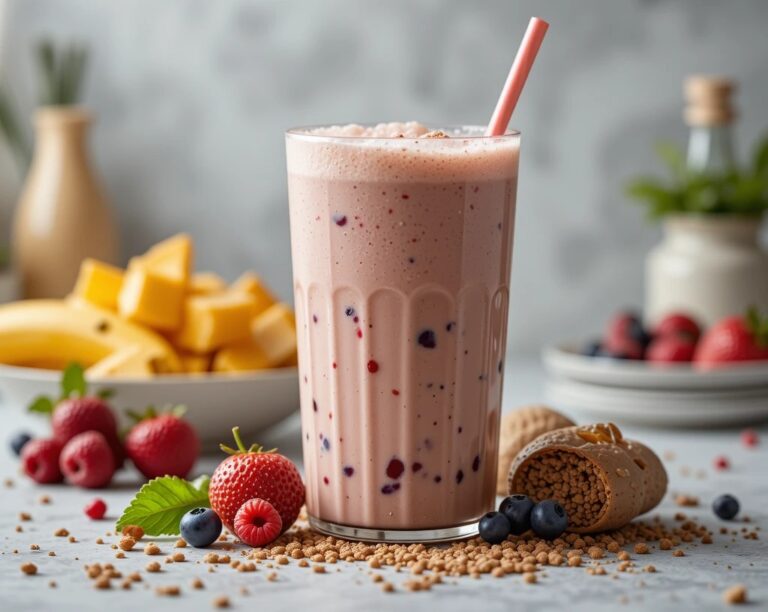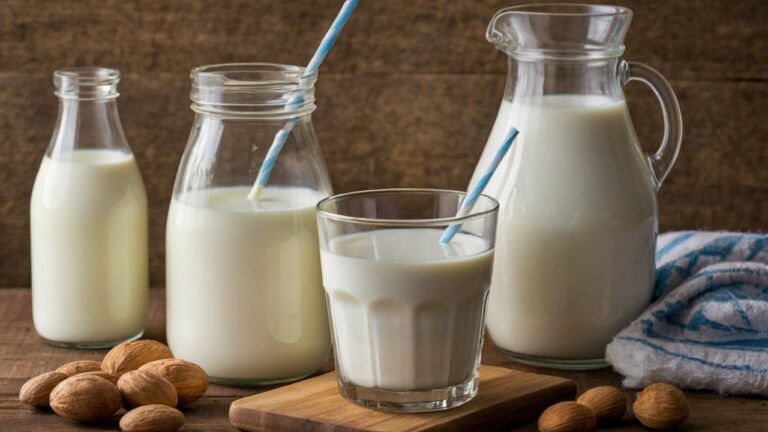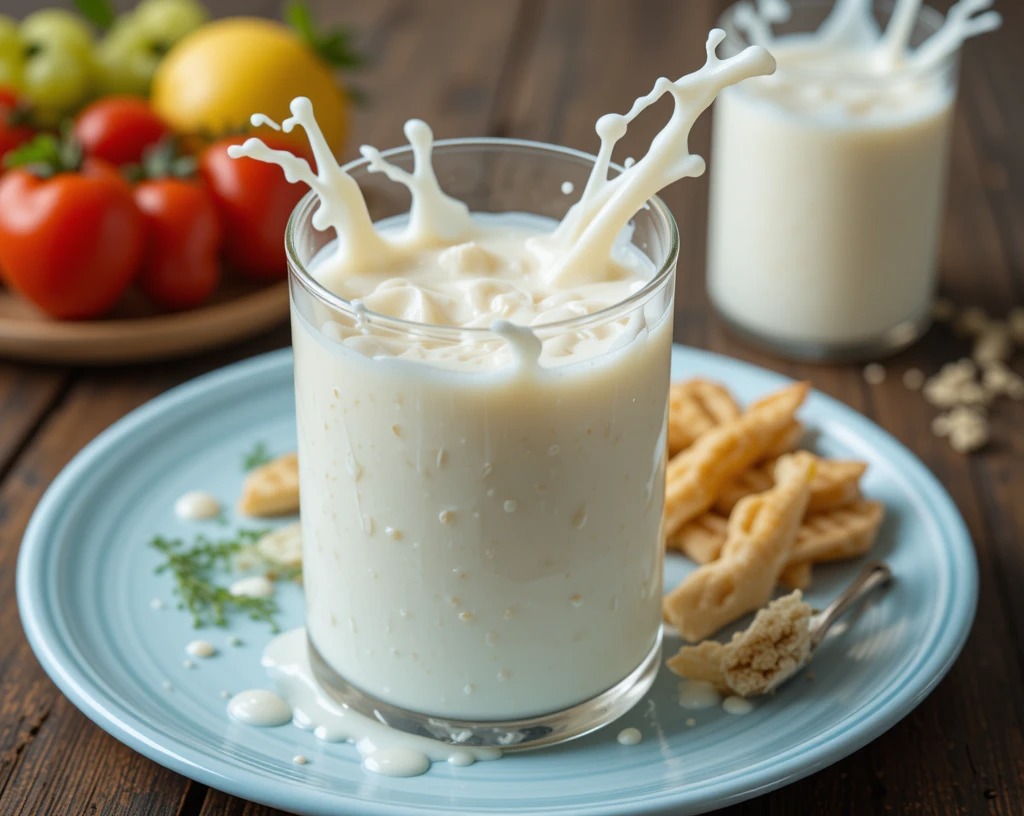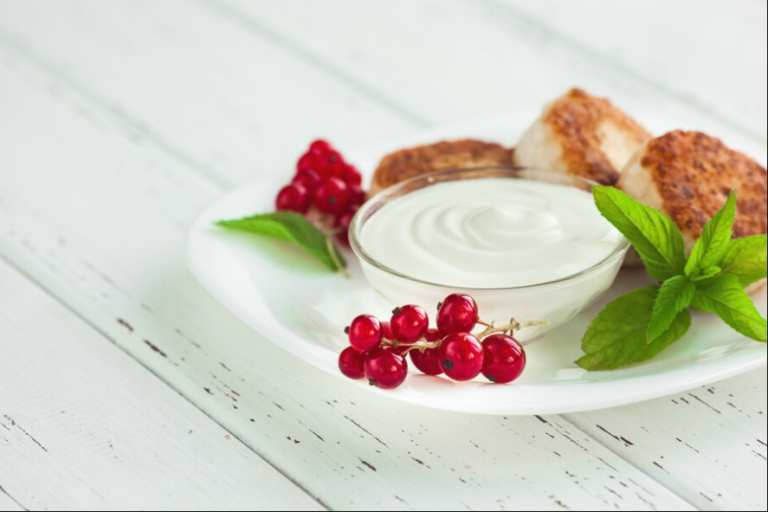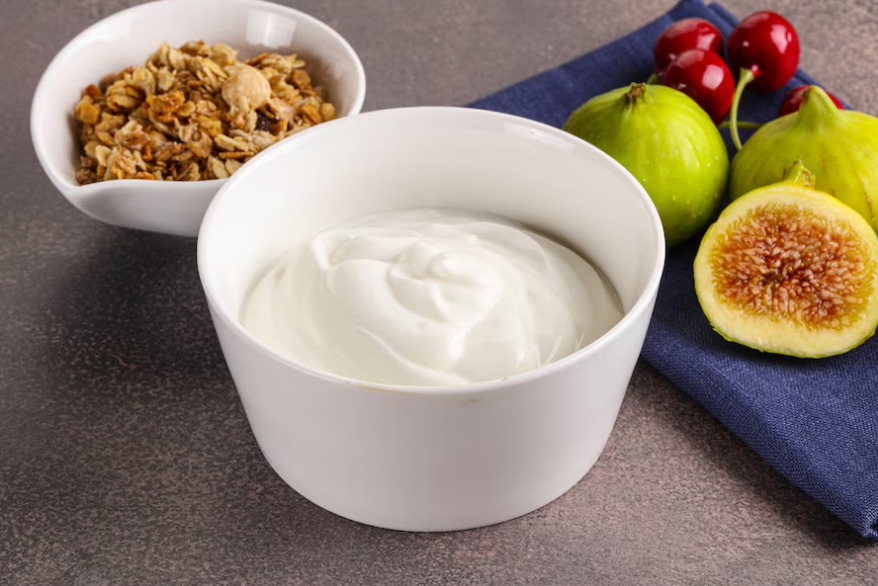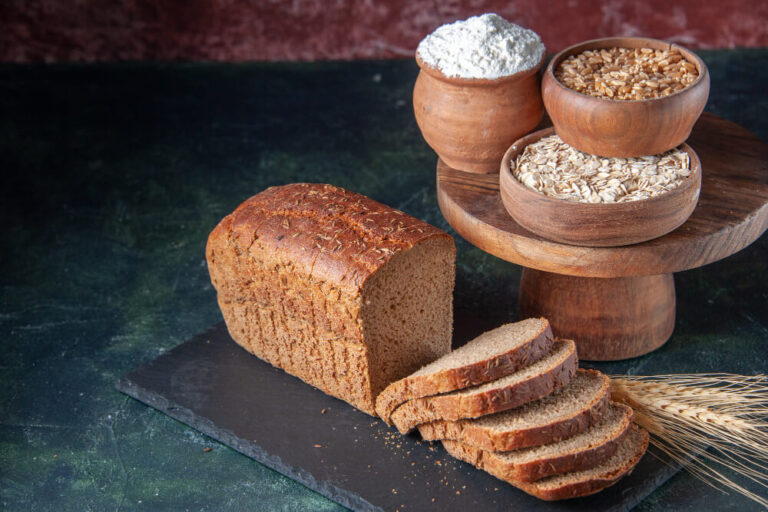Fairlife protein shakes have become a popular choice for those looking to supplement their protein intake with a convenient, ready-to-drink option. Known for their high protein content and low sugar levels, these shakes are marketed as a healthier alternative to other protein beverages.
Packed with protein and low in sugar, Fairlife shakes are a convenient option—but are they truly healthy?
We will analyze the nutritional benefits and potential drawbacks of Fairlife protein shakes, providing an in-depth look at whether they are a suitable addition to your diet. We’ll also offer guidance on how to make an informed choice when it comes to incorporating them into your daily routine.
Nutritional Profile of Fairlife Protein Shakes
Key Nutrients (Per Serving)
Protein Content: Fairlife protein shakes are high in high-quality protein, typically ranging from 20 to 30 grams per serving. The protein comes primarily from ultra-filtered milk, offering a complete amino acid profile that supports muscle building and recovery.
Calories: These shakes have a moderate calorie count, usually between 150 and 200 calories per serving. This makes them a good option for those looking to manage their calorie intake without compromising on protein.
Sugar and Carbs: Fairlife shakes are notably low in sugar, typically containing only 2 to 3 grams of sugar per serving. This makes them ideal for those on keto diets or those looking to manage blood sugar levels, including diabetics.
Fat: The shakes are low in saturated fat, with most varieties containing only around 3 to 4 grams of fat per serving. This contributes to a healthier fat profile and aligns with heart-healthy dietary guidelines.
Added Vitamins and Minerals: Fairlife protein shakes are fortified with added nutrients such as calcium, vitamin D, and sometimes magnesium. This fortification supports bone health, immune function, and overall well-being.
Unique Features
Lactose-Free: Fairlife shakes are lactose-free, making them suitable for individuals who are lactose-intolerant or sensitive to dairy.
Ultra-Filtered Milk: The ultrafiltration process that Fairlife uses increases the protein concentration while reducing the sugar content in their shakes. This process enhances the quality of protein while keeping the shakes smooth and easy to digest.
This combination of high-quality protein, low sugar, and essential nutrients makes Fairlife protein shakes a solid option for people looking for a convenient, nutritious beverage.
Health Benefits of Fairlife Protein Shakes
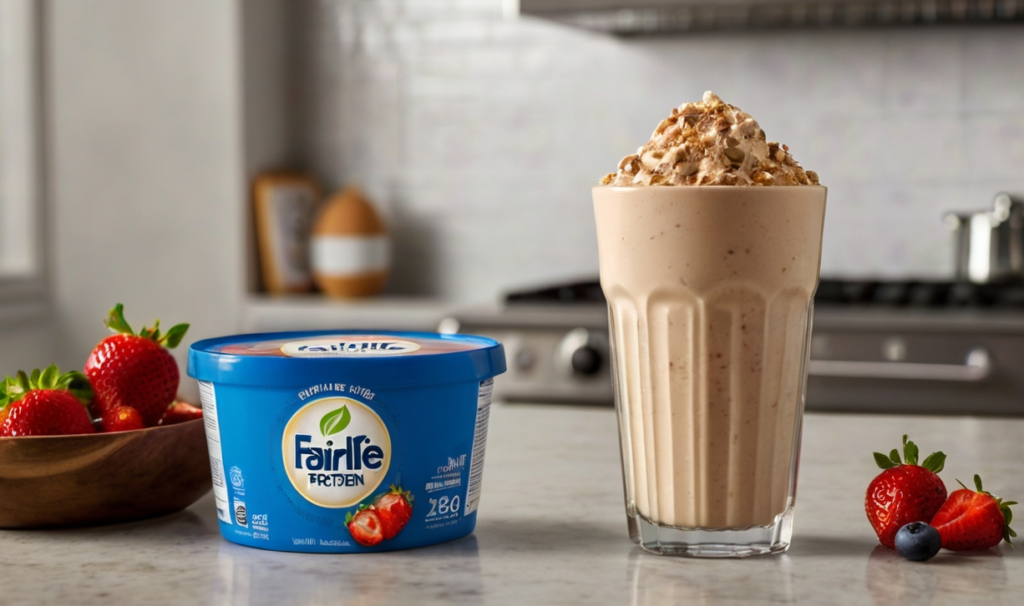
High-Quality Protein: Fairlife protein shakes are an excellent source of high-quality protein, which is essential for muscle repair, growth, and overall tissue health. They are especially beneficial for post-workout recovery, as the protein helps rebuild muscles after intense exercise.
Low Sugar Content: With only 2 to 3 grams of sugar per serving, Fairlife protein shakes are a great option for those looking to manage blood sugar levels, such as diabetics. The low sugar content also makes them suitable for people on low-carb or keto diets who wish to limit sugar intake.
Lactose-Free: Since Fairlife protein shakes are lactose-free, they are a fantastic option for individuals with lactose intolerance or those who are sensitive to dairy. This ensures that those with digestive issues related to lactose can still enjoy the benefits of dairy-based protein without discomfort.
Convenient Nutrition: Fairlife protein shakes are an ideal solution for busy individuals who need a quick and nutritious meal or snack. They are portable, easy to consume on the go, and provide a balanced mix of protein, essential nutrients, and low sugar, making them a perfect option for meal replacements or a quick breakfast.
Rich in Calcium and Vitamin D: These shakes are fortified with calcium and vitamin D, which are crucial for maintaining strong bones and supporting the immune system. Calcium is vital for bone density, while vitamin D helps the body absorb calcium more effectively. This makes Fairlife protein shakes a good option for those looking to boost their bone health.
Overall, Fairlife protein shakes offer a well-rounded nutritional profile, with high-quality protein, low sugar, and added vitamins and minerals, making them a convenient and healthy addition to various diets.
Potential Drawbacks of Fairlife Protein Shakes
Artificial Ingredients: Fairlife protein shakes contain artificial sweeteners such as sucralose, which some individuals may want to avoid due to potential digestive discomfort or concerns about long-term health effects. While these sweeteners contribute to the low sugar content, they may not be suitable for everyone, particularly those who prefer more natural sweeteners.
Cost: Fairlife protein shakes tend to be priced higher than many other protein shake options on the market. For consumers looking for a budget-friendly alternative, the cost of these shakes may be a limiting factor, especially if they’re looking to incorporate them into their daily routine.
Processing: Fairlife protein shakes are ultra-filtered, a process that increases the protein concentration and reduces the sugar content. While this makes the product highly convenient and efficient in terms of nutrition, it’s also more processed than whole foods. Some individuals prefer less processed options to maintain a more natural diet.
Environmental Concerns: Fairlife has faced criticism in the past regarding its farming practices, particularly related to animal welfare. Some consumers may be wary of the brand’s practices, which could influence their decision to purchase Fairlife products. However, it’s important to note that the company has taken steps to address these concerns in recent years.
While Fairlife protein shakes offer numerous health benefits, it’s essential to consider these potential drawbacks before incorporating them into your regular routine. Depending on your dietary preferences, budget, and values, they may or may not be the right choice for you.
Comparison to Other Protein Shakes
Fairlife vs. Premier Protein
Protein Content: Both Fairlife and Premier Protein shakes offer high-quality protein, but Fairlife typically contains around 30 grams of protein per serving, while Premier Protein contains about 30 grams as well. Both are excellent choices for muscle repair and post-workout recovery.
Sugar Levels: Fairlife protein shakes have around 2-3 grams of sugar per serving, making them a low-sugar option. Premier Protein, on the other hand, contains 3-6 grams of sugar per serving, depending on the flavor. Both are relatively low in sugar, but Fairlife may have a slight edge for those looking to minimize sugar intake.
Price: Premier Protein tends to be more affordable than Fairlife, with prices generally lower per serving. Fairlife shakes are more premium-priced, which may make Premier Protein a more cost-effective option for those on a budget.
Fairlife vs. Plant-Based Shakes
Dairy-Based Nutrition: Fairlife protein shakes are dairy-based and provide a complete source of protein, as they contain all nine essential amino acids. They also include calcium and vitamin D, which are beneficial for bone health.
Plant-Based Shakes: Plant-based protein shakes, such as those made from pea, hemp, or soy protein, are typically dairy-free and suitable for those with lactose intolerance or vegan diets. However, plant-based proteins may not always be “complete” proteins, requiring a combination of ingredients to achieve the full amino acid profile. Some plant-based options also have higher carb content, depending on the base used.
Taste and Texture: Dairy-based proteins like Fairlife generally offer a creamier texture and may taste more similar to traditional milk-based products compared to some plant-based alternatives, which can sometimes have a grainier texture or distinct taste.
Fairlife vs. Homemade Protein Shakes
Convenience: Fairlife protein shakes are convenient, ready-to-drink, and ideal for busy lifestyles, offering quick nutrition without preparation. Homemade protein shakes, however, require more time to prepare and blend, but they allow you to control ingredients fully and can be made with whole food ingredients, such as fruits, vegetables, and natural protein sources like whey or plant-based protein powders.
Control Over Ingredients: Homemade shakes allow you to avoid artificial ingredients and sweeteners, which may be a concern with Fairlife protein shakes. You can also adjust the sugar content and add other nutritious ingredients (like superfoods, fiber, or healthy fats) to create a more personalized, wholesome shake.
Nutrient Density: Homemade shakes might provide more flexibility in nutrient density. For example, you can add antioxidants from fruits or vegetables or incorporate healthy fats like chia seeds or nut butter, giving you a more balanced shake. Fairlife shakes are nutrient-rich but may be lacking in fiber or whole-food nutrients that a homemade shake could offer.
Summary
- Fairlife vs. Premier Protein: Similar in protein content and low sugar, but Fairlife is more expensive.
- Fairlife vs. Plant-Based Shakes: Fairlife is a dairy-based protein with complete amino acids, while plant-based shakes may not always offer the same profile but are suitable for vegan or lactose-intolerant diets.
- Fairlife vs. Homemade Protein Shakes: Fairlife is convenient, but homemade shakes give you full control over ingredients and can be tailored to your specific nutritional needs.
Ultimately, the best choice depends on your dietary preferences, lifestyle, and budget.
How to Incorporate Fairlife Protein Shakes Into a Healthy Diet
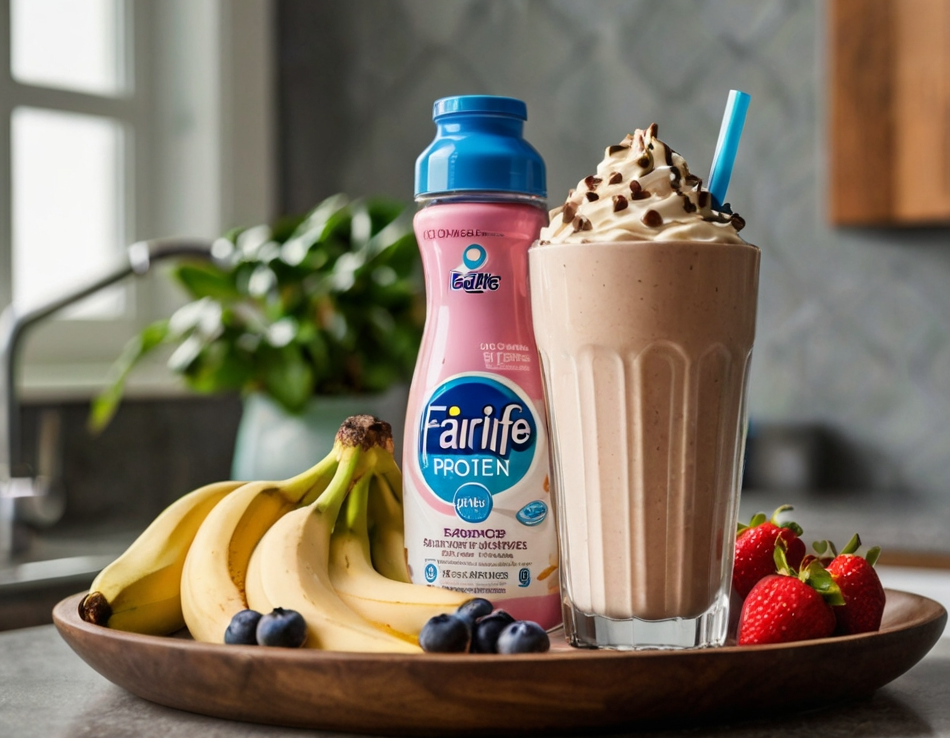
Post-Workout Nutrition
Recovery Shake: After exercise, your body needs protein to repair muscles and replenish energy stores. Fairlife protein shakes are an excellent option due to their high protein content, which supports muscle growth and recovery. Pair your shake with some carbs, like a banana or whole-grain toast, to restore glycogen levels and aid muscle repair.
Meal Replacement
Balanced Meal: If you’re pressed for time, Fairlife protein shakes can serve as a quick meal replacement. To make it more filling and nutritionally balanced, blend your shake with fruits like berries or bananas, a handful of nuts for healthy fats, or some leafy greens for extra fiber. This combination will ensure you’re getting a mix of macronutrients and micronutrients to fuel your body throughout the day.
Snack Alternative
Sustained Energy: Rather than reaching for sugary or processed snacks, a Fairlife protein shake is a great alternative. It’s packed with protein to keep you full and energized, preventing the mid-afternoon energy slump. You can enjoy it as a snack between meals to curb hunger and stay on track with your healthy eating goals.
Moderation Is Key
Whole Foods First: While Fairlife protein shakes offer convenient and high-quality protein, it’s important not to over-rely on shakes for your nutrition. Whole foods should be the foundation of your diet, as they provide essential vitamins, minerals, and fiber that shakes can’t fully replace. Use protein shakes as a supplement to a well-rounded diet, not as a replacement for whole, nutrient-dense meals.
Incorporation Tips
Balance with Fiber: Since protein shakes typically lack fiber, be sure to balance them with fiber-rich foods (such as vegetables, whole grains, or fruits) to keep your digestive system functioning optimally.
Hydrate Well: When consuming protein shakes, be mindful of hydration—especially if you’re using them post-workout. Drinking water alongside your shake can help with recovery and maintain electrolyte balance.
By incorporating Fairlife protein shakes mindfully into your diet, you can enjoy their benefits without sacrificing the essential nutrients that come from whole foods.
Common Questions About Fairlife Protein Shakes
Are Fairlife protein shakes good for weight loss?
- Answer: Fairlife protein shakes can be beneficial for weight loss when used as part of a balanced diet. With their high protein content, they can help curb hunger and support muscle maintenance, making them a good option for reducing overall calorie intake while preserving lean muscle. However, like any food or drink, they should be consumed in moderation and alongside whole foods for a balanced approach.
Do Fairlife shakes contain artificial sweeteners?
- Answer: Yes, Fairlife protein shakes contain artificial sweeteners such as sucralose. These are used to reduce sugar content and keep the shakes low-calorie. While sucralose is generally considered safe by food safety authorities, some people may prefer to avoid artificial sweeteners due to potential digestive issues or personal preference.
Is Fairlife protein shake suitable for diabetics?
- Answer: Fairlife protein shakes can be suitable for diabetics due to their low sugar content and relatively low glycemic index. However, it’s important to monitor blood sugar levels and consult with a healthcare professional, as individual needs may vary. People with diabetes should also ensure that the shakes fit within their overall carbohydrate and calorie goals for the day.
Can kids drink Fairlife protein shakes?
- Answer: While Fairlife protein shakes can be consumed by children, they should not be used as a regular meal replacement. The shakes can be a convenient source of protein for growing children but should be part of a balanced diet. It’s best to offer a variety of whole foods to ensure children get a broad range of nutrients. Always consult with a pediatrician before introducing new supplements or protein shakes into a child’s diet.
Conclusion
Fairlife protein shakes offer high-quality protein, low sugar, and are convenient for those on the go. However, it’s important to consume them in moderation and complement them with whole foods for a balanced diet.
Fairlife protein shakes can be a healthy choice for those looking for a quick protein boost, but as with any supplement, consider your dietary needs and preferences before incorporating them regularly.
Looking for protein shake alternatives or homemade recipes? Check out our guide to creating personalized protein drinks and explore options tailored to your nutrition goals!

